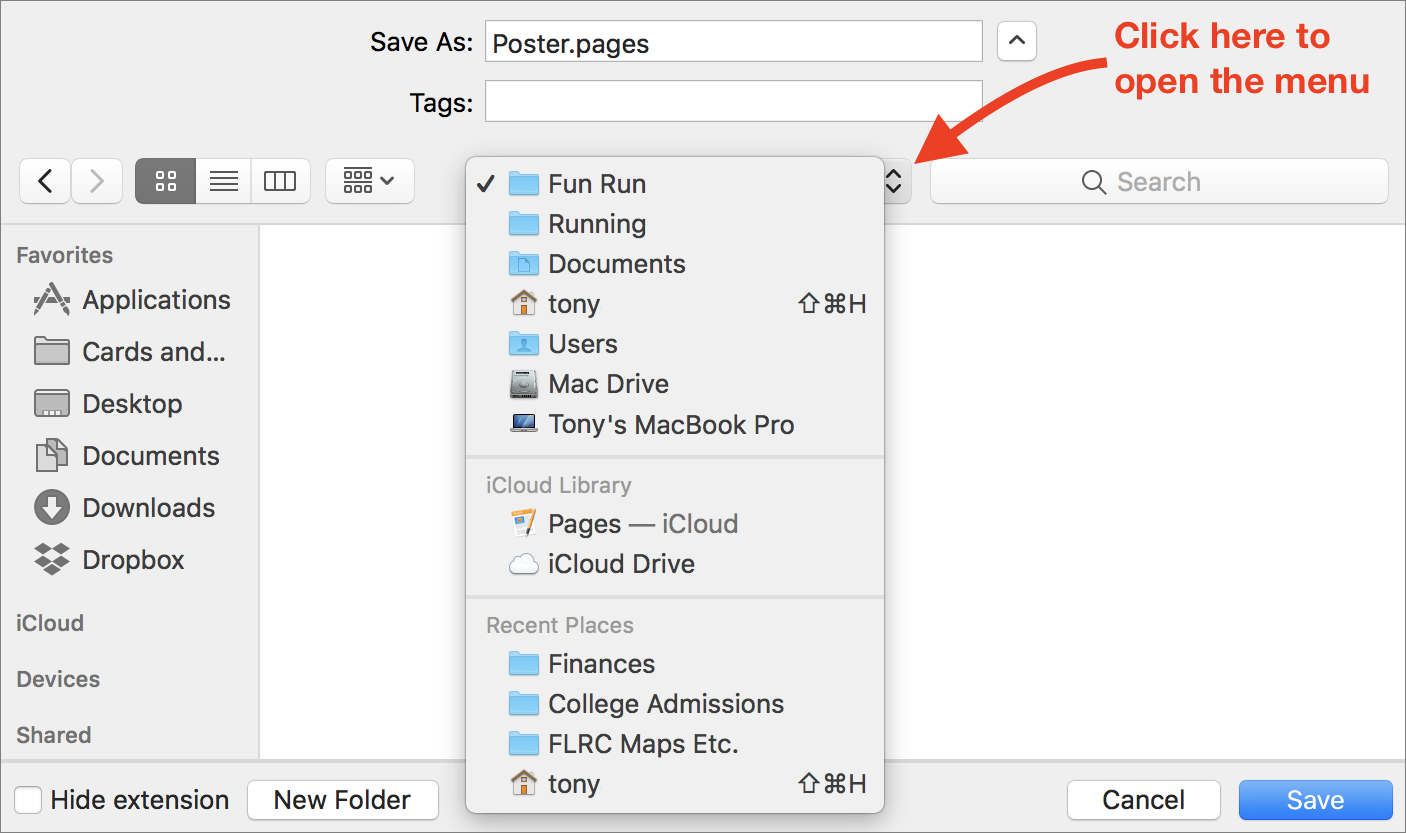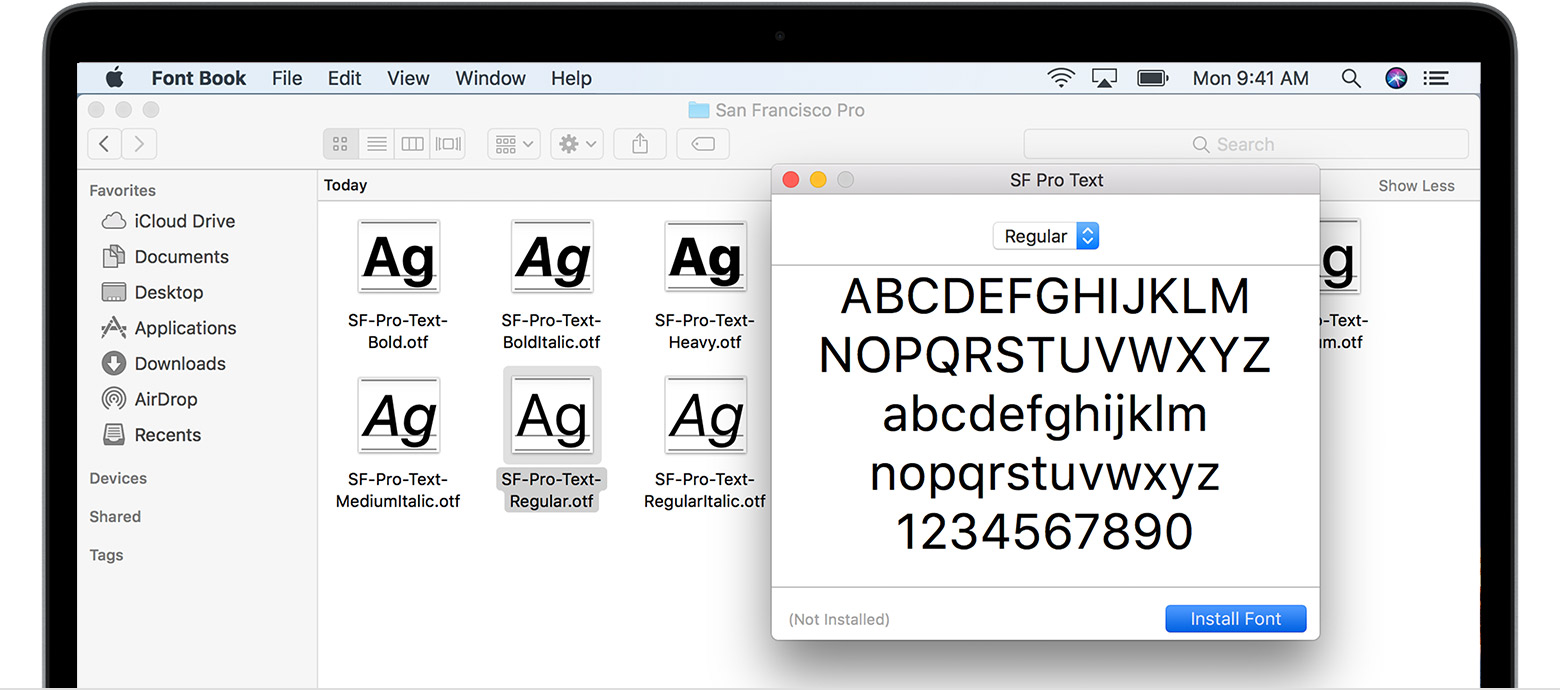To display the Download status list from the keyboard, press cmd+Option+L. You can also click the Download button at the upper-right corner of the window to display the Download list. By default, Safari saves any downloaded files to the Downloads folder that appears in your Dock. Just download it and open it. You'll see what to do next. It will help you find out what's eating up your disk space. TIP: set it up to make invisible files visible. If your drive is nearly full. Screenshot by Matt Elliott/CNET 5. No internet connection. Sometimes my MacBook ($850 at Best Buy) freaks out and can't connect to my Wi-Fi network when my Windows laptop and iPhone ($900 at Boost. Press Windows key + X computer management-shared folders- choose the shared folder, right click it then click Properties Share Permissions -protection that everyone can read and execute, see folder contents and read permissions. If you're 2012 macbook pro a1278 is having flashing blinking folder with question mark, turning off randomly, computer freeze randomly, or white screen of de.
I have stored about 8GB photos and videos in the Camera roll on my 64GB iPhone 6S. There is hardly any space for new pictures, and I want to save the images to my MacBook Pro. I connect my iPhone to MacBook Pro and open iPhoto to display iPhone photos. However, No pictures or videos are uploaded. I have just updated my iPhone to iOS 11, is that the problem?
iPhone not showing up on Mac or iPhone not showing up on iPhoto/Photos on Mac is a high-frequency problem for many users, especially with iPhone update to iOS 11. To help users to solve this matter, we offer all the tried and true methods on this page. Moreover, the EaseUSMobiMover Free is recommended in the second part to assist users in transferring photos, videos, music or other data from iPhone to Mac when iPhone not showing up on Mac can’t be fixed with tips below.
Part 1: Common solutions to fix iPhone now showing up on Mac

1. Change another USB cable or USB port
USB cable or USB port not working may be the first reason for iPhone not showing up on Mac or not connecting to Mac. When you are connecting iPhone to Mac, do use the original lightning cable, and try a different USB port on your Mac.
2. Unplug and plug in iPhone again
Unplug and plug in iPhone to Mac back for a few times to troubleshoot the USB cable and port problem. If this won’t work, continue and try more solutions.
3. Restart your iPhone and Mac
iPhone or Mac restart will clear the device’s memory and starts it up fresh, which is a simple but very effective way to solve some software running problems, like the live wallpaper not working in iOS 11.
Restart iPhone 8/8 Plus/7/6
- Press and hold the Side button until the slider appears.
- Drag the slider to turn off your iPhone.
- Press and hold the sleep/wake button again until the Apple logo appears on your phone screen.
Restart iPhone X
- Press and hold the Side button and either volume up/down button until the slider appears.
- Swipe the slider to turn off your iPhone.
- Press and hold the Side button again until the Apple logo appears on your phone screen.
Restart Mac
Press the power button (or press Control+Eject) and, when a dialog box appears, click the Restart button.
4. Update Mac OS and iOS system
Different iPhone requires different Mac OS system, make sure your Mac system is higher than the system on iPhone. Java programming app download. You'd better keep the systems on your iOS and Mac are the latest ones.
5. Close third-party software
If you are running a third-party photo storage device on your Mac, the iPhone may be won't appear on Mac iPhoto. Or if there is a software conflict, the problem also can occur. Wherefore, close the related third-party tools when you meet the issue.
Part 2: How to transfer files from iPhone to Mac when iPhone not showing up on Mac
If above solutions can't fix iPhone not showing up on Mac iPhoto/Photos/Finder and you need to export photos, videos and other data from iPhone to Mac to free up iPhone space, how to do it quickly without using iTunes? As if iPhone not showing up on Mac Finder, it probably won’t be recognized by iTunes.
Here is the highly recommended EaseUS MobiMover Free to help you to transfer files from iPhone to Mac without iTunes in one-click or optionally. You can move contacts, messages, notes, calendars, voice mails, books, Safari bookmarks & history, photos, videos, music, playlists, and audiobooks without files quantity and size limitation.
Step 1. Connect your iPad to your Mac with a USB cable and tap 'Trust This Computer' on your iPad if you are asked > Run EaseUS MobiMover for Mac and choose the 'Phone to Mac' on the main screen > Click the 'Next' to continue.
Step 2. Then, MobiMover automatically reads and loads all the supported data on your iPad as the screenshot shows below. You are free to send them all or selectively export one data type at a time. Besides, you can set the destination for saving exported iPad files on your Mac. If you don't customize it by yourself, MobiMover will send them to a desktop folder named by Exported by MobiMover.
Step 3. Click the 'Transfer' to import data from iPhone or iPad to Mac. When the process has completed, you can view, edit, or delete them as you want on your Mac.
Summary: This blog offers one of the best solutions for resolving a flashing question mark (?) folder problem on Mac screen. And while you deal with this problem, you may face data loss situation due to corruption or inaccessible media. So, we also cover along data recovery solution for Mac hard drives. Do you know Stellar Data Recovery Professional recovers data from a non-booting Mac as well? Free download to know more. |
When I turned on my MacBook Pro, a flashing folder with a question mark came on the screen. That stayed there for a few seconds, but the Mac booted later on. Is there an issue with my MacBook Pro? Any suggestions…

Yesterday, after I turned on my MacBook Air, it displayed a flashing folder with a question mark. It didn’t boot so I had to force shut down. Then on, I didn’t start the MacBook. I don’t know what’s going on. Any clues on how to fix this?
In this blog, we will help you resolve the problem of ‘flashing folder with a question mark sign’ on your MacBook or iMac. And while you deal with this problem, you may come across the possibilities of data loss due to corruption or inaccessible media. So, we also cover along data recovery solution for Mac hard drives.
Let’s begin with the reasons for— why your Mac is flashing a question mark folder?
Flashing folder with a question mark (?) error may occur if the Mac cannot detect its boot directory. This can happen in the following situations:
- Mac cannot find the Startup Disk i.e. Macintosh HD
- The macOS is corrupt
Flashing Folder Macbook Pro
How to Repair Mac Flashing Question Mark Folder?
Following are the scenarios you would face in the ‘MacBook flashing folder question mark’ situation, along with the solutions you can use to tackle them:
Case 1: When MacBook displays the error for a few seconds but boots
Step 1: Go to Apple menu > SystemPreferences > StartupDisk.
Step 2: Click the icon of the Startup Disk that is generally named as MacintoshHD.
Focusrite 212 driver macbook free download. Step 3: Click Restart; your Mac won’t display flashing folder with question mark again
Case 2: When MacBook displays the error but does not boot.
A) Force Shutdown and Enter macOS Recovery Mode
Step 1: Press & hold the power button for a few seconds to force shut down the MacBook.
Step 2: Power on the Mac and immediately press & hold Command + R keys until Apple logo, spinning globe, or firmware password prompt appears.
a) When prompted, select a Wi-Fi network. You’ve entered into macOS recovery mode.
Blinking Folder Macbook Pro
Step 3: When macOS Utilities appears, go to Apple menu > StartupDisk.
Step 4:Click the Startup Disk (Macintosh HD), and then click Restart.

If the Startup Disk icon is not visible in the Startup Disk window, then likely the Startup Disk is facing a problem. Try repairing it with First Aid, as follow:
B) Repair Startup Disk
Step 1: In the macOS recovery mode, go to macOS Utilities and click DiskUtility.
Step 2: From the left pane, select the Startup Disk (MacintoshHD).
Step 3: Click the First Aid tab and then click the RepairDisk button.
Step 4: Exit DiskUtility once the repair process is over.
Step 5: Go to Apple menu > Startup Disk then select the Startup Disk (Macintosh HD) and Restart.
If the Startup Disk is still not visible after repair, then you would need to reinstall macOS to solve the ‘Flashing Folder with a Question Mark’ problem.
Also Read: 8 Best Ways to Recover a Failed Internal Mac Hard Drive
C) Recover Data from macOS
Step 1: Back up the MacBook data [critical step]
This is critically important because if you reinstall the OS without first backing up the data, it will result in data loss due to overwriting. So, back up the data present in the Startup Disk to another functional Mac (Target Disk Mode), as follows:
Step I. Connect the Mac that has flashing question mark to another Mac via Target Disk Mode.
Step II. Easily get the Stellar’s data recovery software from the below:
Step III. Install Stellar Data Recovery Professional for Mac on the working Mac.
Step IV. Launch the tool, and from the main interface, select RecoverData.
Step V. Select the type of data and the location of the flashing question mark drive.
Step VI. Click Scan after you turn on the DeepScan feature for rigorous searching.
Step VII. Click Recover, and on the dialog box, specify the save location and click Save. The ‘save’ location can be the working Mac’s internal drive if it has sufficient space or else another external drive.
For quick walkthrough on how to use the software for MacBook data backup, see the following video:
Step 2: macOS Reinstallation
After the data stored on the HD – having flashing question mark folder problem – is backed up, proceed with reinstalling macOS, as follows:
- In the macOS Recovery mode, go to macOS Utilities and click Reinstall macOS.
- Click Continue then select Macintosh HD (Note: You have already done the Mac data recovery to an external storage drive.)
- Erase Macintosh HD and execute the on-screen steps to reinstall macOS. Once the installation is over, Mac automatically restarts and boots from the Startup Disk.
- In Setup Assistant, migrate your data from the source disk (i.e. external storage/HD of the functional Mac) to the internal Mac drive.
Note: When Disk Utility does not show the Startup Disk or cannot repair it, then the storage drive has hardware problems. Contact a Mac repair service provider in this scenario.

Conclusion
The article elaborated various methods to repair flashing question mark folder screen on Mac. The first case occurs when your Mac shows a flashing folder with a question mark for a few seconds. In this case, you reselect the Startup Disk from system preferences.
The second case happens when your Mac is stuck in the flashing folder with a question mark without booting. In this case, you need to enter the macOS recovery mode and reselect the Startup Disk. If it’s not visible, then try repairing it with Disk Utility.
If the Startup Disk repair fails, then you would need to reinstall macOS to overcome this problem. But, before that, it’s critical to back up the data stored on this hard drive, as reinstalling macOS will simply overwrite the existing data.
Question Mark Folder Macbook Pro
So, connect the affected Mac to a functional Mac via Target Disk Mode, install Stellar Data Recovery Professional software on this working Mac, and then run it on the affected hard drive to extract and backup all the data to a secure location. Once the data is backed up, reinstall the macOS on the drive to fix the flashing folder with a question mark issue on Mac.
